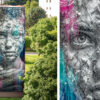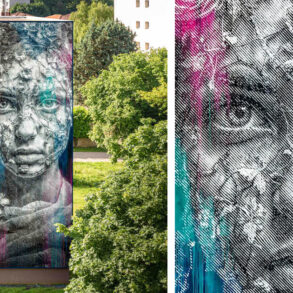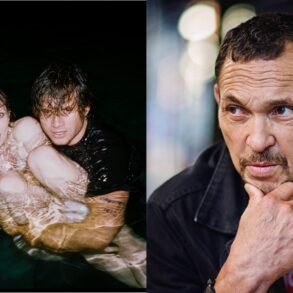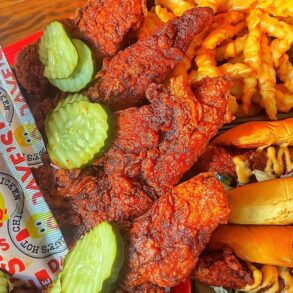Every morning, I board the Red Line on an island platform in the middle of the Dan Ryan Expressway.
On my way to school, I’ve grown accustomed to sights of the 47th Street Metra yard, White Sox park and the downtown skyline that comes closer into view.
I hear the familiar “Ding-dong, doors closing,” followed by a swift whoosh that blocks out the rush of the expressway.
If I closed my eyes, I would know exactly where I am.
It’s become a monotonous routine, just a wasted hour every day, staring out at what was there the day before. Until recently.
I’d always noticed the graffiti scattered along my commute but never paid it much attention.
Now, I grew fascinated with the vibrant block letters spray-painted on the overpass walls.
These bursts of color flew by as the cityscape transitions from the abandoned buildings and vacant lots of the South Side to the Loop’s opulence.
I began to observe patterns not just along the Red Line but across the city.
I recognized distinct styles of the same artists on the Green Line bridge over the Dan Ryan, along the Stevenson Expressway near McCormick Place and on the overpasses at the Jane Byrne interchange. I wondered how anyone could climb the steel supports as traffic roared 20 feet below.
Even deep inside the State Street subway tunnel, halfway down the slope between the Cermak-Chinatown and Roosevelt stations, I would see fleeting tags, briefly illuminated by the tunnel lights.
The next day, they were gone, presumably scrubbed away by maintenance staff.
But fresh graffiti appeared in the same spot a few days later. It was a cat-and-mouse game of spray-painting surfaces before they were painted over. These graffiti artists risked their lives just to leave their mark for others to see.
Yes, graffiti is illegal, often dangerous and expensive to clean up.
Some call it lawless vandalism that tarnishes the city. But graffiti captures the essence of Chicago in all of our imperfections and contradictions. The glass facade of a skyscraper stands alongside the graffiti-coated dumpster in its alley. The letters pop out provocatively, whether we choose to see them or not.
They are not definitively black and white, right or wrong, ugly or beautiful.
I found inspiration in the relentless drive of the unseen artists.
I want to embody this spirit as I grow older — of pushing boundaries, taking risks and embracing controversy.
As I pursue a career in public administration, I want to amplify the voices of the underserved in a way that cannot be ignored.
Graffiti is not just a metaphor of defiance.
I believe that public art can breathe new life into Chicago’s blighted communities.
On the walls of shuttered grocery stores and the boarded-up windows of crumbling bungalows, art transforms hopelessness into creativity and resilience.
On the South Side and the West Side, I want to empower community artists to express themselves and fight the dehumanization of their neighborhoods. If graffiti artists can reach the most unreachable and forgotten places, we should beautify every single street corner in Chicago.
Someday, every young child will walk to school surrounded by art that uplifts them and inspires pride.
The Chicago of the future is filled with change-makers who will go to great pains to make a difference no matter how temporary or small.
People who might never show their faces to the public. People who defy the powers that are designed to crush them. People who will shape their own narrative rather than be silenced.
People who brighten up my morning commute with something different every day.
This post was originally published on this site be sure to check out more of their content.








